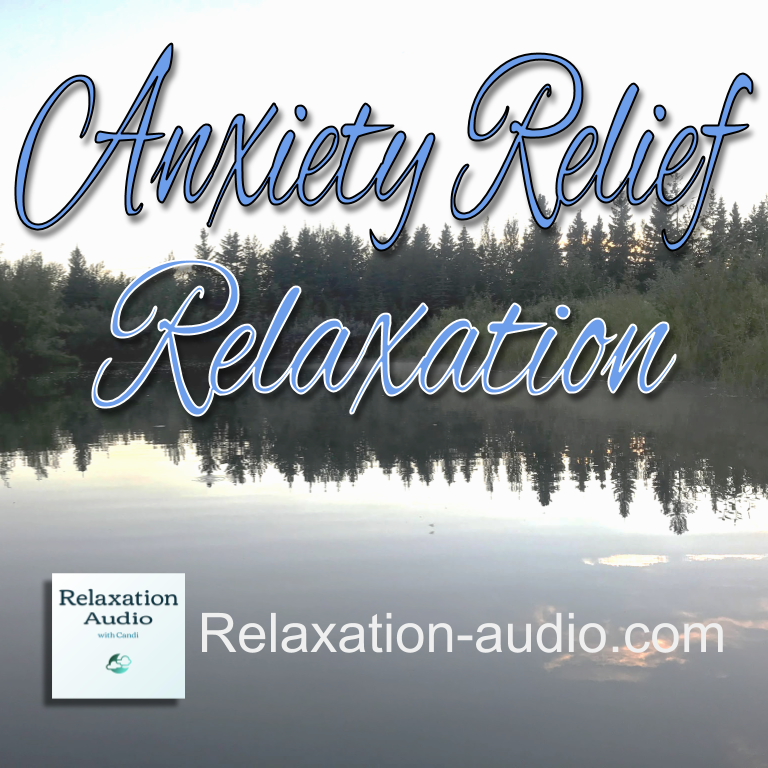Anxiety relief relaxation exercise to reduce anxiety. Helpful for panic attacks or generalized anxiety. Includes physical exercise such as squats and wall pushups.

Disclaimer
Use this anxiety relief relaxation technique if you have confirmed that your symptoms are related to anxiety, and not another medical condition. Statements such as “you are not in any danger” apply if you have ruled out other medical conditions. If you are unsure why your symptoms are happening, please seek medical attention right away.
Anxiety Relief Relaxation Script
If you are experiencing anxiety right now, I want you to know that you are going to be okay. This feeling will pass, so let’s get through it now together.
Notice your symptoms now, without trying to change anything. Even though anxiety is uncomfortable, try to allow the anxiety and just observe.
Your body is trying to protect you.
Is your heart racing? That is because your body is making sure that your blood is flowing quickly so you can respond to situations that require you to move quickly or to use your muscles.
Do your muscles feel tense? They are ready for action.
Does your chest feel tight? This could be from tense muscles.
If you feel dizzy or lightheaded, this may be caused from breathing too quickly. Your body causes you to take deep breaths to make sure you have enough oxygen.
Do you have a feeling of fear, doom, panic, or dread? The hormones your body produces when you are feeling anxious can actually cause these feelings. The thoughts we tend to have when anxious also contribute to the uncomfortable anxious feelings.
For some people, anxiety causes unsettling physical feelings such as chest pain, or nausea, or breathing difficulty. These sensations can happen because of the rapid breathing, tight muscles, and rush of anxiety hormones that happen during the stress response.
If you are having trouble breathing, it could be because your normal and natural desire to get enough air is causing you to breathe deeply in, and to take less time breathing out. You can’t get more air in when your lungs are still too full.
Breathing
Let’s start with some breathing to help the body slow down, and begin to wind down this stress response.
Breathe out, through pursed lips, as if you are blowing out a candle. You may want to hold a finger in front of your face, and with each breath, feel the cool air on your finger as you breathe out. Good.
Go ahead and breathe in through your nose, focusing on breathing slowly. Pause for a moment when your lungs are full, and then breathe out again the same way, like you are blowing out a candle.
Repeat, breathing slowly in through your nose. Pause. Now breathe out through your mouth.
Breathe in slowly, and this time when you exhale, breathe out really slowly, so if you were to breathe toward a candle, the flame would flicker, but it would not go out.
Good. Again, breathe slowly in through your nose. Pause. Now breathe out slowly through your mouth…so slowly that you would not disturb a candle that was right in front of you.
Keep on doing these same slow breaths as we continue this relaxation technique.
Your body knows how to relax.
Remember that symptoms of anxiety are not dangerous. You are not in any danger. Anxiety is not going to hurt you, even though the brain may be telling you that you are in great danger. We are going to allow the body to its job of keeping you safe and ready to handle situations that come your way.
Your body also knows how to relax. The relaxation response is natural and automatic, and it is the way your body comes back to baseline after the stress response happens.
All you have to do right now is get through this, and very soon you will be feeling more relaxed. Your body will do that automatically, even if you do nothing. Let’s focus on being as comfortable as possible while this feeling passes.
Remind yourself that you are safe: I am safe. I am okay. I am getting through this.
Good. You are managing this. You are getting through anxiety, and you are handling it well. You will soon feel relaxed and peaceful, because relaxing is something your body knows how to do. Your body knows how to relax. Your body will relax very soon. You may even notice that your body is already starting to become more relaxed.
Physical exercise to reduce anxiety
Let’s use up the stress hormones that your body produced. Your body is ready to move, so let’s use those muscles. Begin with a squat. If you are not able to do this movement right now, or if you would rather not, instead you can tense your leg and hip muscles and then release the tension. To do a squat, keep your feet about shoulder width apart, and bend your knees and hips while bringing your hips back and your shoulders forward. Your weight will be supported above your knees and feet, and the muscles of your hips, bottom, and thighs will support you. Only go as low as you feel comfortable, ensuring that you do not put strain on your knees, back, or other parts of your body. Your back should be angled forward, but kept in a healthy alignment. Keep holding this squat position for a few moments.
Now straighten back up to a standing position, and then lower yourself again into a squat. Hold. Keep breathing.
Now stand again, nice and tall. Breathe in. Now return to a squat as you breathe out.
Stand as you breathe in. Squat again as you breathe out.
One more time, stand as you breathe in, and squat as you breathe out.
(Continued)
The anxiety relief relaxation script continues in the video below.
For more anxiety relief relaxation scripts and relaxation techniques to relax the mind, go to relaxation-audio.com/anxiety.







